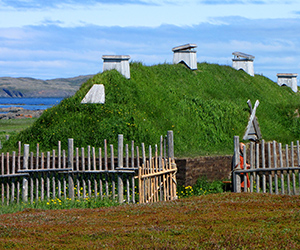CANADA HISTORY
Nationalism

Canada's participation in the First World War transformed the nation in profound and lasting ways, shaping both its national identity and its position within the British Empire. When Canada entered the war in 1914, it was primarily seen as a loyal dominion, closely tied to Britain’s imperial destiny. However, by the end of the conflict in 1918, Canada had evolved into a more autonomous and self-confident nation, one that had found its voice on the international stage. This transformation was forged in the crucible of war, particularly through key battles like Vimy Ridge, and tempered by the political tensions at home, such as the Conscription Crisis of 1917. The war's legacy was a complex mixture of national pride, political division, and a redefined place for Canada within the global community.
Canada’s Entry into the War: Loyalty to the British Empire
When Britain declared war on Germany on August 4, 1914, Canada, as part of the British Empire, was automatically drawn into the conflict. Canada’s foreign policy at the time was controlled by London, and there was no question of whether the country would participate. Prime Minister Robert Borden quickly pledged support to the war effort, reflecting Canada’s deep imperial loyalty. In the early days of the war, there was widespread enthusiasm across English Canada. For many, the war was seen as a grand adventure, a chance to prove the mettle of a young nation and to defend the British Empire in its time of need. Borden initially promised to send 25,000 troops to Europe, but by the end of the war, more than 620,000 Canadians had served in the armed forces—a remarkable commitment for a country of only seven million people.
However, this early enthusiasm for the war was not shared uniformly across the country. French Canadians, who had long-standing grievances with British imperial policies, were far less enthusiastic about the conflict. They did not feel the same loyalty to Britain as many English Canadians did, and for them, the war in Europe seemed distant and disconnected from their own concerns. These underlying tensions would eventually erupt into the Conscription Crisis of 1917, but in the early years of the war, the focus remained on the battlefield.
The Formation of a Distinct Canadian Army
As Canada began to mobilize for war, there were initial plans to integrate Canadian soldiers into British units, essentially using them as replacements within larger British formations. This idea was strongly resisted by Sir Sam Hughes, Canada’s Minister of Militia and Defence. Hughes insisted that Canadian soldiers should fight together as distinct units, maintaining their national identity within the broader war effort. This was an early assertion of Canadian autonomy within the British war machine, and although Hughes was a controversial figure, his insistence on a separate Canadian command structure laid the groundwork for the development of a truly Canadian military force.
The Canadian Expeditionary Force (CEF) was trained on Salisbury Plain in England before being dispatched to France. Over time, Canadian soldiers distinguished themselves on the battlefield, gaining a reputation for toughness, resilience, and skill. By 1916, Canadian divisions were a key part of the British Expeditionary Force, and they played a crucial role in some of the war’s most important battles. The ultimate symbol of Canada’s military prowess came in April 1917, during the Battle of Vimy Ridge.
Vimy Ridge: A Nation Forged in Battle
The Battle of Vimy Ridge is often regarded as a turning point in Canadian history. The ridge, located in northern France, had been heavily fortified by the Germans and had resisted multiple attempts by British and French forces to capture it. In April 1917, four divisions of the Canadian Corps were tasked with taking the ridge. Under the command of General Julian Byng, the Canadians meticulously planned their attack, employing innovative tactics such as the creeping barrage and extensive use of tunnels to protect soldiers from enemy fire.
On April 9, 1917, the Canadians launched their assault, and by April 12, they had captured the ridge. The victory was a significant military achievement, and it came to symbolize Canada’s coming of age as a nation. For the first time, all four Canadian divisions had fought together as a unified force, independent of British command. The success at Vimy Ridge not only demonstrated the skill and bravery of Canadian soldiers but also ignited a new sense of national pride. As Brigadier-General A.E. Ross famously said, "In those few minutes, I witnessed the birth of a nation."
The victory at Vimy Ridge became a cornerstone of Canadian identity. It was not just a military triumph but a moment of national consciousness, a realization that Canada was no longer merely a colony of Britain but a nation in its own right. While battles like Passchendaele, Ypres, and the Somme also involved significant Canadian contributions, Vimy became the symbolic embodiment of Canada’s new status. The war had provided the stage for Canada to assert its autonomy, both militarily and politically.
The Conscription Crisis: A Divided Nation
While victories on the battlefield were forging a new sense of Canadian nationalism, the war was also exposing deep divisions within the country. As the war dragged on and casualties mounted, it became clear that voluntary enlistment would not be enough to sustain Canada’s military commitment. By 1917, Prime Minister Borden, having witnessed the staggering losses at the Imperial War Conference in London, became convinced that conscription—compulsory military service—was necessary.
The introduction of conscription, however, proved to be one of the most divisive issues in Canadian history. English Canadians, particularly in Ontario and the western provinces, overwhelmingly supported conscription, seeing it as a necessary step to support the war effort. French Canadians, led by Wilfrid Laurier and the Liberal Party, were vehemently opposed. For them, the war in Europe had little relevance, and the idea of being forced to fight for the British Empire was intolerable.
Borden’s decision to pass the Military Service Act in 1917—which made conscription mandatory for men aged 20 to 45—led to widespread protests in Quebec. The resulting Conscription Crisis not only deepened the divide between English and French Canada but also left a lasting political legacy. In the 1917 federal election, Borden’s Unionist government, which was a coalition of Conservatives and pro-conscription Liberals, won a majority, but the election was bitterly contested. Quebec overwhelmingly voted against the government, and the issue of conscription would haunt Canadian politics for decades to come.
The Versailles Peace Conference and Canada’s New International Role
When the war finally ended in November 1918, Canada emerged as a more confident and assertive nation. Prime Minister Borden’s insistence on Canadian representation at the Versailles Peace Conference in 1919 was a major step in Canada’s journey toward full autonomy. Although Canada was still part of the British Empire, Borden successfully argued that Canada’s immense contributions to the war effort entitled it to a seat at the peace table. Canada signed the Treaty of Versailles independently of Britain, a symbolic gesture that underscored its growing international stature.
This newfound independence was further solidified in 1931 with the passage of the Statute of Westminster, which granted Canada control over its own foreign policy. The road to full sovereignty, which had begun with the establishment of Dominion status in 1867, had been accelerated by the experiences of World War I. The war had shown that Canada could stand on its own, both on the battlefield and in the realm of international diplomacy.
Conclusion: A Nation Transformed
Canada’s participation in World War I fundamentally transformed the nation. The war exposed deep divisions within Canadian society, most notably during the Conscription Crisis, but it also fostered a new sense of national identity. The success of the Canadian Corps on the battlefield, particularly at Vimy Ridge, gave Canadians a sense of pride and accomplishment that transcended the country’s colonial status. Canada’s insistence on independent representation at the Versailles Peace Conference was a significant step toward full sovereignty, a process that would culminate with the Statute of Westminster in 1931.
While the war left scars—both in terms of human loss and political division—it also laid the foundations for a more autonomous and self-confident Canada. The experience of World War I marked the beginning of Canada’s transition from a dominion within the British Empire to an independent nation with its own voice on the world stage. It was a defining moment in the country’s history, one that shaped the Canada we know today.
Cite Article : www.canadahistory.com/sections/documents




